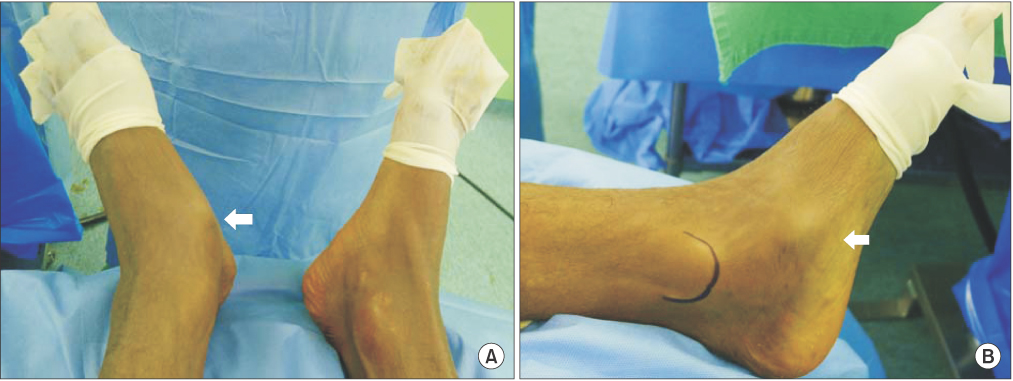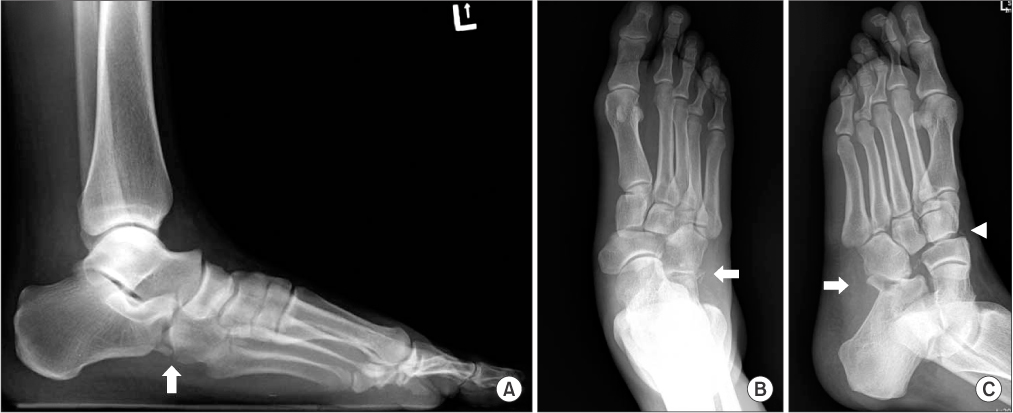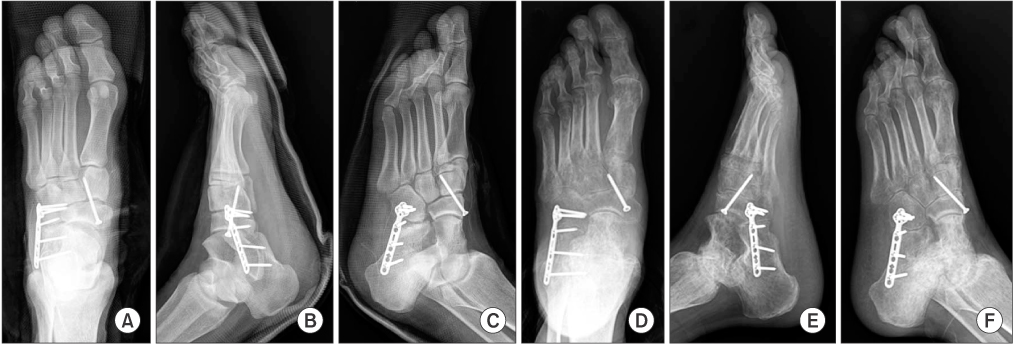J Korean Foot Ankle Soc.
2017 Sep;21(3):108-112. 10.14193/jkfas.2017.21.3.108.
Fracture and Dislocation of the Midtarsal Joint: A Case Report
- Affiliations
-
- 1Department of Orthopaedic Surgery, Bundang Jesaeng General Hospital, Daejin Medical Center, Seongnam, Korea. bluejun0929@gmail.com
- KMID: 2389941
- DOI: http://doi.org/10.14193/jkfas.2017.21.3.108
Abstract
- The midtarsal joint is composed of the talonavicular and calcaneocuboid joints. It is also known as the Chopart joint. Midtarsal joint fracture and dislocation are relatively rare and frequently missed or misdiagnosed. A proper understanding about the anatomy of the midtarsal joint is an essential part in comprehending the mechanism of injury and rationale for treatment. Anatomical reduction of midtarsal joint with correction of the column in length and shape are important; however, it is technically challenging and may require open procedure. Herein, we described a case of initial open reduction and internal fixation for midtarsal joint fracture and dislocation with a brief literature review.
Keyword
MeSH Terms
Figure
Reference
-
1. Korean Foot and Ankle Society. The foot and ankle. Seoul: Jin Publishing Co.;2010. p. 26–27.2. The Korean Fracture Society. Principles of fracture management. Seoul: PanMun Education;2013. p. 837–839.3. Richter M, Thermann H, Huefner T, Schmidt U, Goesling T, Krettek C. Chopart joint fracture-dislocation: initial open reduction provides better outcome than closed reduction. Foot Ankle Int. 2004; 25:340–348.
Article4. van Dorp KB, de Vries MR, van der Elst M, Schepers T. Chopart joint injury: a study of outcome and morbidity. J Foot Ankle Surg. 2010; 49:541–545.
Article5. Main BJ, Jowett RL. Injuries of the midtarsal joint. J Bone Joint Surg Br. 1975; 57:89–97.
Article6. Benirschke SK, Meinberg E, Anderson SA, Jones CB, Cole PA. Fractures and dislocations of the midfoot: Lisfranc and Chopart injuries. J Bone Joint Surg Am. 2012; 94:1325–1337.
Article7. Choi JW, Choi JC, Na HY, Shim DJ, Kim YH, Lee SH, et al. Chorpart's dislocation: a case report. J Korean Foot Ankle Soc. 2005; 9:121–124.8. Ip KY, Lui TH. Isolated dorsal midtarsal (Chopart) dislocation: a case report. J Orthop Surg (Hong Kong). 2006; 14:357–359.
Article9. Ly TV, Coetzee JC. Treatment of primarily ligamentous Lisfranc joint injuries: primary arthrodesis compared with open reduction and internal fixation. A prospective, randomized study. J Bone Joint Surg Am. 2006; 88:514–520.
Article
- Full Text Links
- Actions
-
Cited
- CITED
-
- Close
- Share
- Similar articles
-
- Isolated Plantar Midtarsal Dislocation: A case Report
- Chorpart's Dislocation: A Case Report
- Dislocation of Fifth Carpornetacarpal Joint: Two Cases Report
- Treatment of Traumatic Sternoclavicular Joint Anterior Dislocation with a Sternal Fracture
- Clavicle Midshaft Fracture with Acromioclavicular Joint Dislocation: A Case Report







